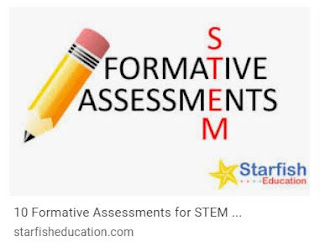2 Types of Assessments
Assessment can be an end of unit test giving the final report or it can be based on the daily opportunities afforded to teachers to collect data about student work. (Coffey & Black, 2001).
I spoke to two teachers in my network. I will address them as M and Z. For one of them, M, assessment is primarily based on end of the task. For the other, Z, it is chiefly based on the daily opportunities in the class. So, for one of them it is the formality of the final exam that matters and for the other one it is a part of daily life, natural. M believes that anything that a student does can be used for assessment (Coffey & Black, 2001).
For example, in teaching energy conservation, M organized for a class discussion. Through that, observing the students, she realized that students did not understand it fully and hence she organized for an activity in the laboratory. She gave students clear instructions for the group activity (using a pendulum to initiate thinking). She asked the students to think why the pendulum rests after each movement back to the middle and discuss to arrive at their conclusions. The students had a rubric to guide them through the task. A rubric helped her for it focused the thoughts of the students towards expected levels of performance (Developing Rubrics, n.d.). M meanwhile walked around and observed the students deep into discussions. She was able to ascertain the various skills and behaviours the students displayed through this and used that to design further lessons.
Z on the other hand, conducted the activity in the class as a demonstration. The students observed. The she explained the concept of energy conservation, gave students some reading material for discussion and finally took an assessment to check their learning. The assessment was based on a score out of 10 and was to be counted for the final grade that the stduents obtained.
Both M and Z have their own way to assess. The reasons come from their own personalities. While M is fluid and wants to give students a wider space to grow in the class, Z is concept focused and feels a sense of achievement when the students have scoped high on her tests. M tried a task format complete with instructions and rubric (Bell, Van Horne, Penuel, &Stromholt, 2016). Z preferred a summative. While M’s assessment was holistic and inclusive of the personalities of the students. Z’s assessment was focused on concept. Both have the pluses and minuses. M’s assessment covered width but at the end of it one does not know how well stduents would perform on a formal test for their knowledge of the concept is not checked. Z would perhaps give a description of the performance but would not know the student widely or give space to the ones who do not take to formal education to come forth.
I would prefer a balance of both. I would rather have what M practices but in the scaffold of what Z practices. That would make it complete for me.
References
1. Bell, P., Van Horne, K., Penuel, B., &Stromholt, S. (2016). How can assessments be designed to engage students in the range of science and engineering practices? http://stemteachingtools.org/brief/26
2. Coffey, J., & Black, P. (2001). Read "Classroom Assessment and the National Science Education Standards" at NAP.edu. https://www.nap.edu/read/9847/chapter/5.
3. Developing Rubrics (n.d.). https://assess.pages.tcnj.edu/files/2011/06/Developing-Rubrics.pdf.




Comments